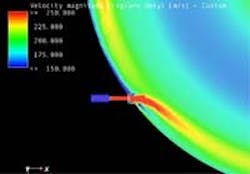Dec USA Inc.: A New Generation of Jetmill Micronizers
High on the list of recent launches is Dec’s new generation of Jetmill micronizers, which have the ability to unlock potential for existing pharmaceutical products and enhance the development of new products.
“This is the biggest leap in micronizing technology for 25 years,” says Ewart Richardson, Director of Dec, a leading global provider of powder handling systems. “Customers have been demanding improvements for some time, so we are delighted to deliver micronizers with so many enhanced applications. The new Jetmills have enabled us to achieve a much smaller particle size compared with conventional mills especially where the process requires dimensions around 1 micron.
Dec’s micronizing design expert, Fausto Castellana continues.
“Computerized Fluid Dynamics (CFD) analysis in conventional micronizers has identified dead areas where powder build-up can occur. This creates waste and eventually leads to clogging and the need for time consuming cleaning. The new jet mill minimizes waste by increasing the working velocity and efficiency of the mill, thus reducing cleaning down time.”
Improved mill performance solves many problems. For example, inhaled products demand even distribution of fine particles of active drugs. Blending of those is critical in this process because particle size determines a more effective bioavailability.
Problem solving aside, this new series of micronizers also creates opportunities as the improved mill efficiency enhances the pharmaceutical effect of many products. A case in point is Fluticasone, now off patent and ripe for development. Its sticky qualities make it a difficult powder to manipulate, but the new generation Jetmills will overcome this problem and help companies release the true potential of this drug.
Additional benefits arise when looking at production down time as a result of cleaning, the occurrence of which, depending on the product being micronized, will considerably reduced. The vertical alignment of the new Jetmills makes cleaning much more easier.
With the ability to be bolted on to any system, it can introduce moisture into the gas stream thus allowing increased manipulation and control many products, particularly if the gas source is very dry nitrogen. This technology could remove many “annealing” which puts moisture back into the product following the micronization process.
Ewart is clearly excited by the potential.
“Process Gas Conditioning has so many possibilities. It can release the unrealized properties of many products and the system can even be used with organic solvents which may allow for new products to be created or possibly extend the patent of existing products. It is a new technology so there are many areas where its use may well be found to be critical over the coming years.”
